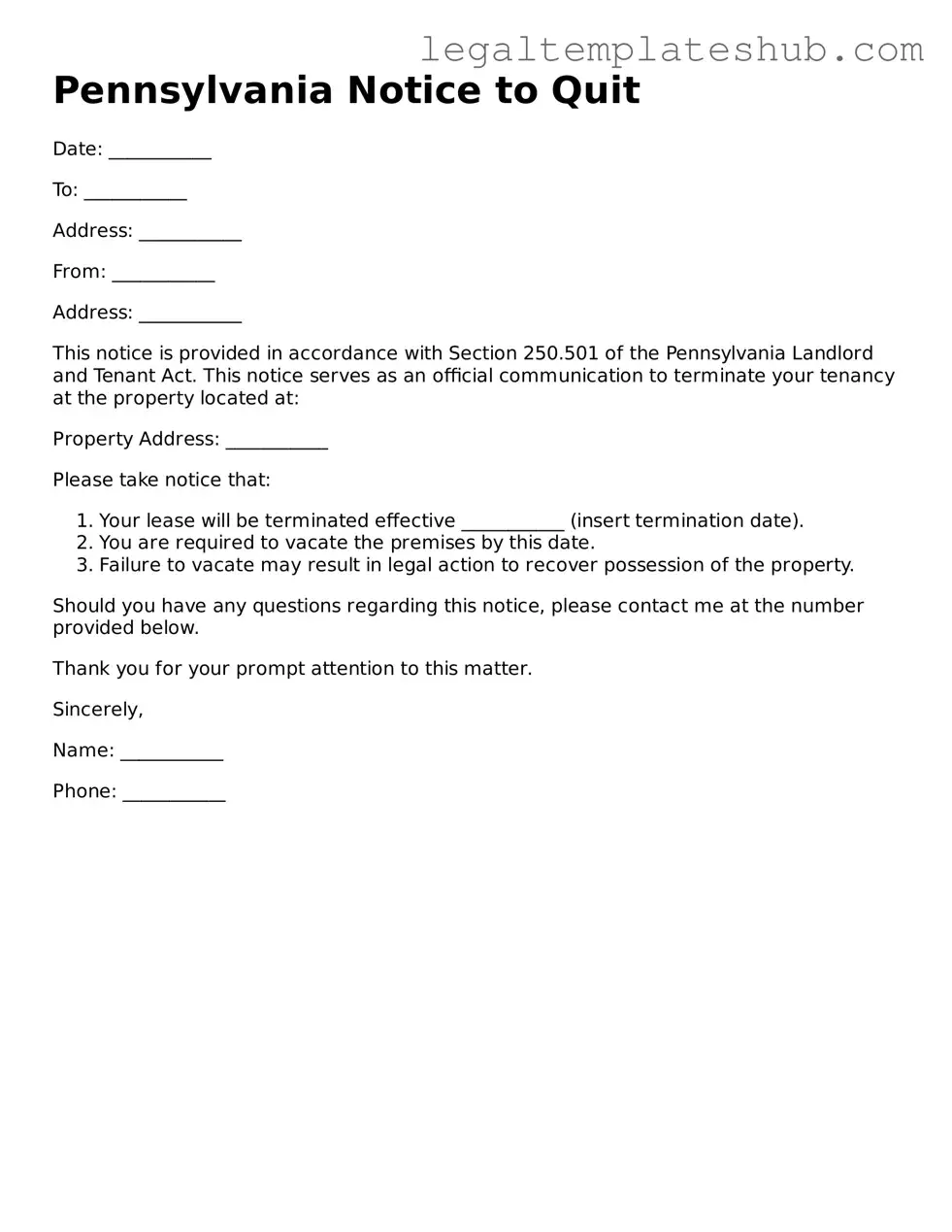Printable Notice to Quit Document for Pennsylvania
The Pennsylvania Notice to Quit form is a legal document used by landlords to inform tenants that they must vacate the rental property. This notice typically outlines the reasons for termination of the lease and provides a timeframe for the tenant to leave. For those needing to fill out the form, click the button below.
Access Editor
